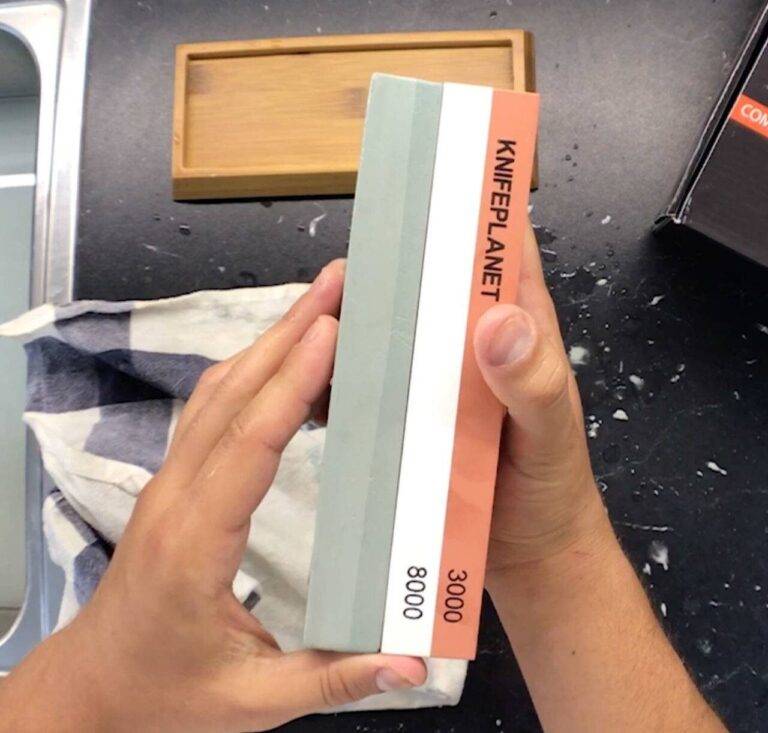Knife Sharpening
How To Flatten A Dished Water Stone in 10 Minutes – Beginner’s Guide
25.07.2018
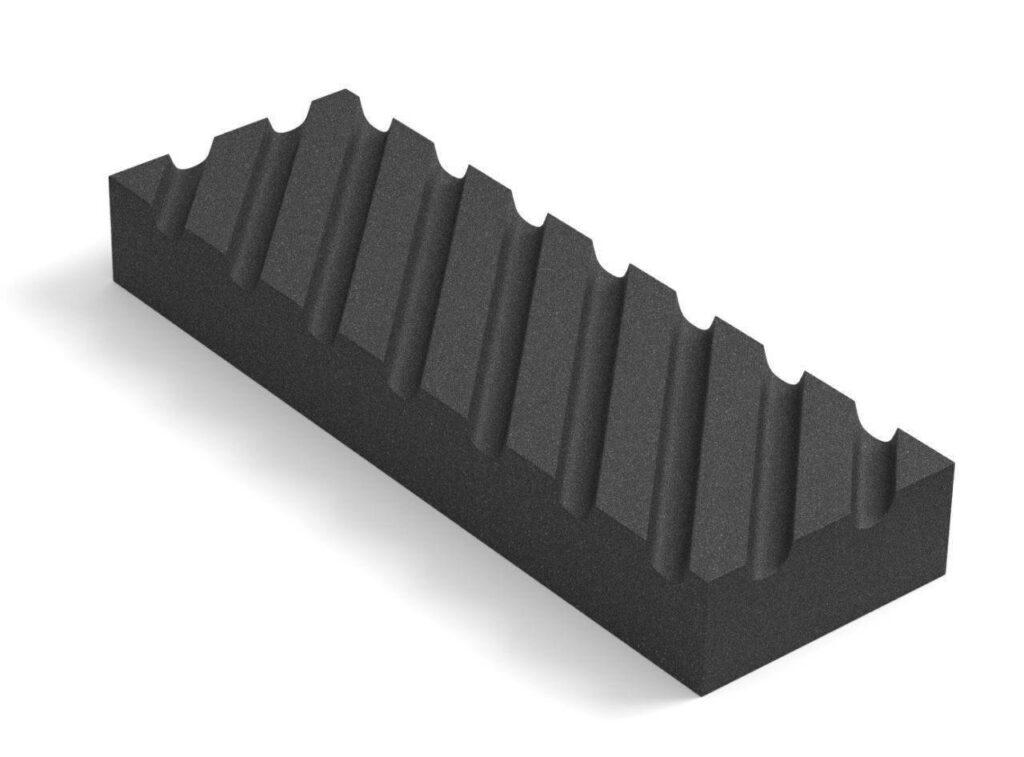
Whether you just bought a water stone, or you’re about to buy one, you need to understand that you will need to take care of them to keep them flat. Flattening a water stone is a very simple process and I will show you how it can be done easily in less than 5 minutes.
Video: How To Flatten a Dished Water Stone in 5 Minutes
![]()
[table id=64 /]
Why Do I Need To Flatten My Water Stones?
The answer is simple. By sharpening your knives on a water stone, the stone will naturally deteriorate. Think about it: you are taking advantage of your stones’ abrasive properties, and the stone “loses” some of its material in the process. It won’t happen overnight, but by using your stone regularly you will start to notice how its shape changes and starts to be damaged right in the middle of the sharpening area. Exactly where you sharpen your knives.
Take a look at this picture. I have been using this #400 grit stone to fix some damaged knives, and it naturally lost its flat shape:
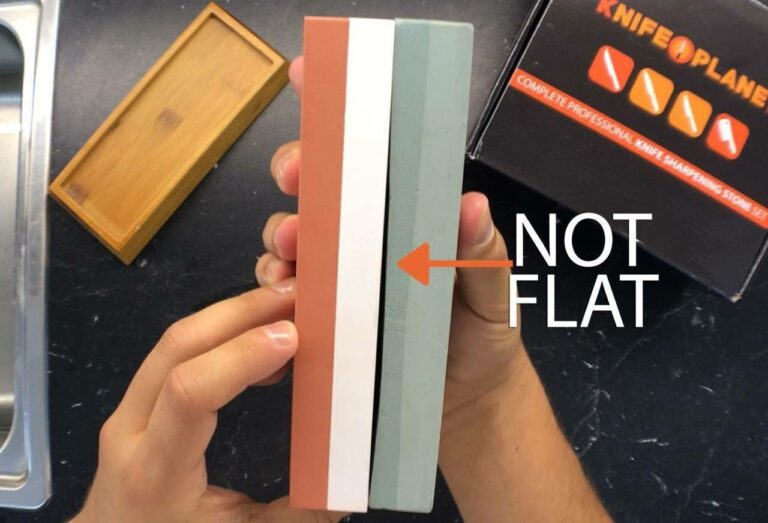
Professional Advices on Keeping Water Stones Flat

We’ve mentioned flattening in several articles on KnifePlanet, and here’s a collection of our best flattening tips & recommendations.
1. “Water Stones come flat, there is a reason to keep them that way. The surface of the stone, when used can become clogged with metal fragments, the process of flattening removes that, it keeps the surface pristine and fresh, like the day it was purchased. Also, when we use a stone regularly, over time it will “dish” in the middle of the stone, the glide path that we use to sharpen. We hold our knife at a particular angle, the spine of the knife is held at a distance from the stone to achieve that angle. Let’s say that distance is half of an inch and the angle achieved is 19 deg. If we move the edge of the knife over a stone that is dished in the middle, that distance is no longer half an inch, it is more than that. This is stretching it for sure but the bottom line is that you should keep your water stones as flat as possible and also the edges should be chamfered, not sharp.” – Flattening advices by Peter
2. “I place a grid on the surface of the stone with a pencil and run the flattening stone over the lubricated stone in a circular motion and also straight a back and forth motion until the pencil marks vanish completely. I turn the stone around in the holder during the process as well.”

Flattening grid: horizontal and vertical lines drawn with a pencil.
3. “Check your stone for flatness every once in a while by laying something flat across it (like the side of a ruler or something similar). There was a time where I used to flatten after each sharpening session, but that time is long gone. I do keep some stones very flat for specific uses, such as uraoshi sharpening.” – Jon Broida interview
4. “It is very important to keep the stones flat and if you sharpen a lot, do it often, before the stones “dish” in the centre. Use very little pressure when flattening, it is not necessary to press down hard at all. When I am done I chamfer the edges of the stone with the plate by holding it at a 45 degree angle and running it over the edges, all four sides, it is a very quick process.”
5. “It is important to keep the stones relatively flat as it grooms the surface, refreshes it and it also promotes consistency. You can decrease the amount of flattening required by getting into the habit of using the whole stone as you sharpen.”
6. “Flattening your whetstone with some 80 or 120 grit silicon carbide powder, or ‘wet & dry’ paper, on a piece of 6mm / 0.25 inch float glass will make your sharpening results and accuracy much more consistent, which is especially important when you are just starting out. Whetstone flatness is particularly important when sharpening single bevel edge traditional Japanese knives, as a convex stone can damage the narrow flat edge on the back side of the blade quickly and correcting this mistake can require the removal of a lot of blade material.” – by Koki Iwahara, Japanese Water Stones Expert
Step-by-step: How To Fix a Damaged Water Stone Quickly
1. Draw horizontal and vertical lines on the damaged stone
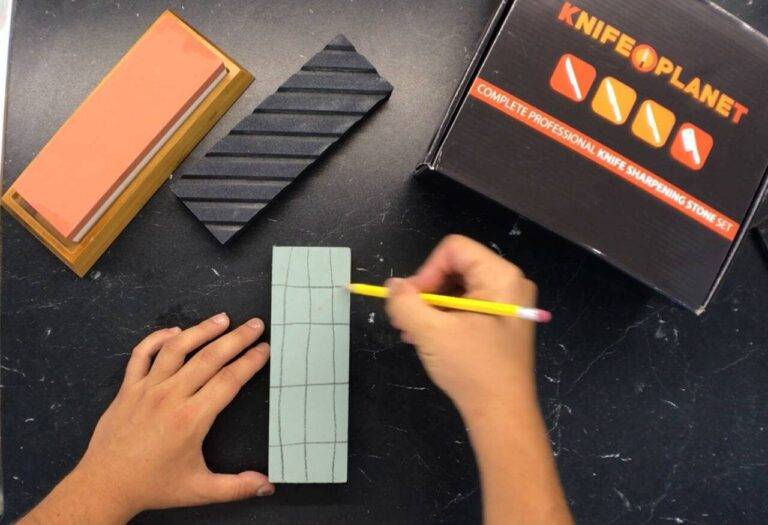
Draw a flattening grid with a pencil.
2. Place flattening stone and dished water stone in water. Let them sink for around 3-4 minutes. You will see bubbles forming, this in normal. Water will activate the abrasive components of the KnifePlanet’s Flattening Stone.
3. Place the water stone flat and rub the flattening stone on it. Your goal is to remove the lines you’ve drawn completely. Keep the stones wet during the process.

Flattening. 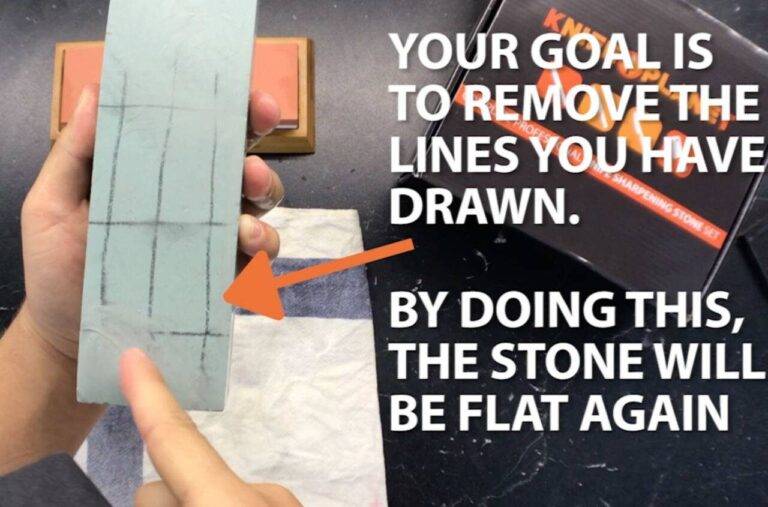
4. Once the lines are removed, the stone is perfectly flat. Get into the habit of doing this after 3-4 knives so you always have your water stones perfectly sharp. It takes no longer than 5 minutes.
The stone is fixed and flat.
A Closer Look At The KnifePlanet’s Flattening Stone
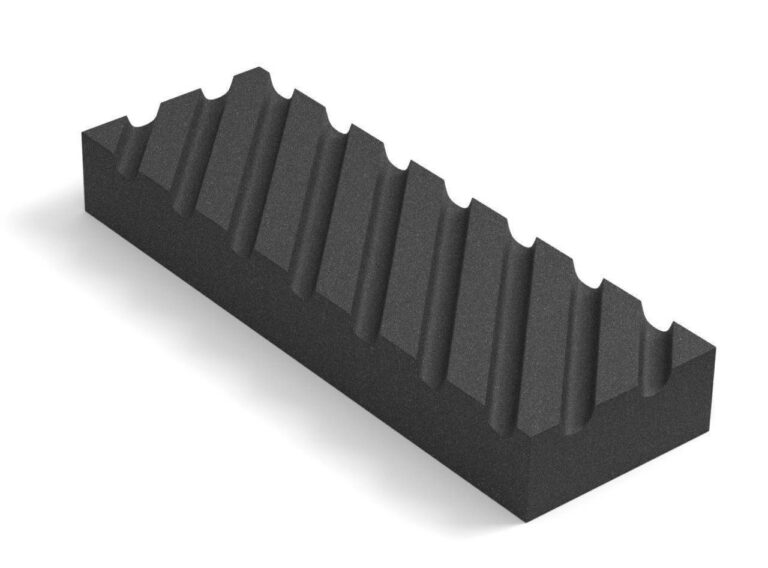
- 180 grit coarse flattening stone
- 7.09 x 2.35 x 1.18 inches (18 x 6 x 3 cm)
- Sink in water for a couple of minutes before use
- Ideal for the 400/1000/3000/8000 KnifePlanet’s Stones
